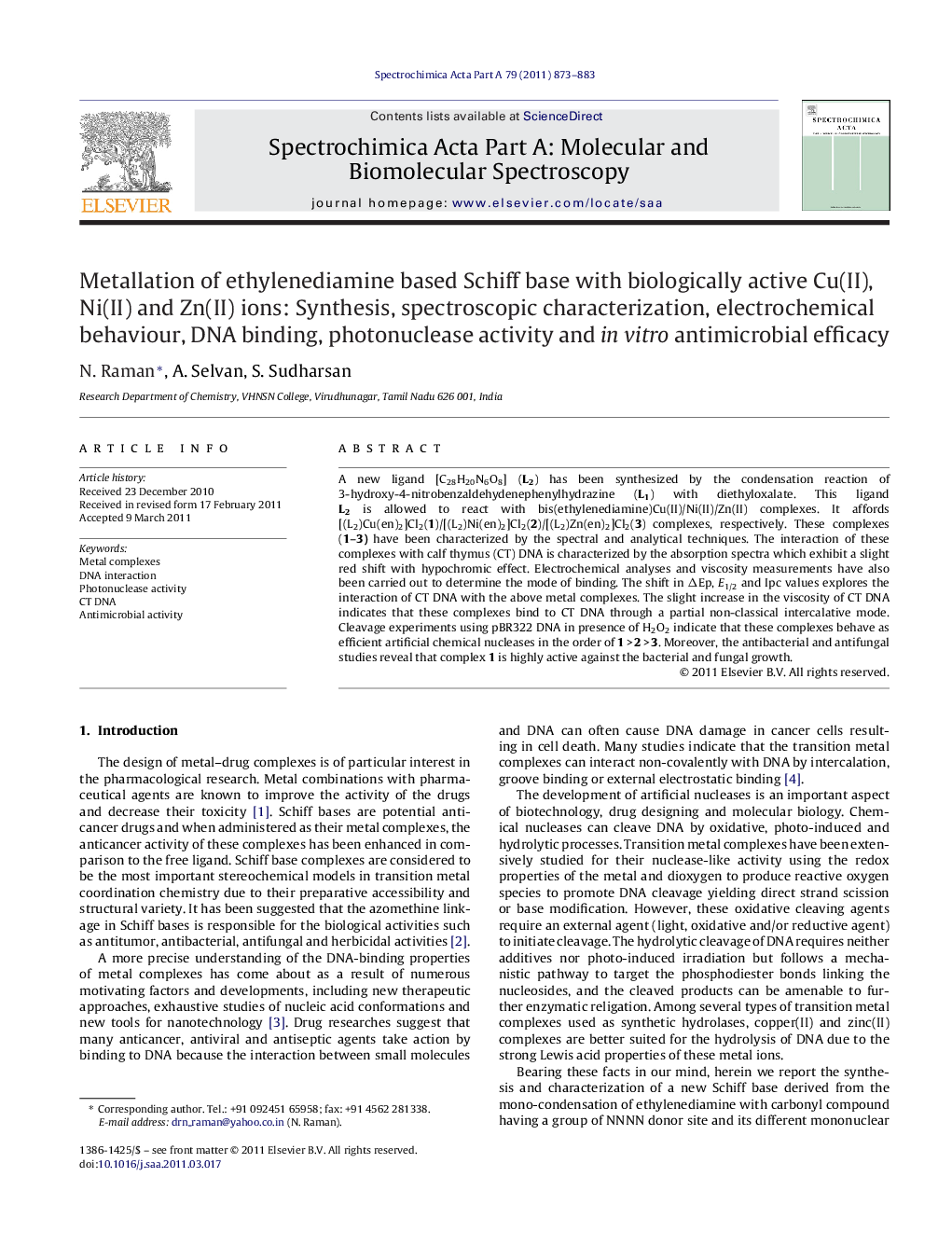| Article ID | Journal | Published Year | Pages | File Type |
|---|---|---|---|---|
| 1236460 | Spectrochimica Acta Part A: Molecular and Biomolecular Spectroscopy | 2011 | 11 Pages |
A new ligand [C28H20N6O8] (L2) has been synthesized by the condensation reaction of 3-hydroxy-4-nitrobenzaldehydenephenylhydrazine (L1) with diethyloxalate. This ligand L2 is allowed to react with bis(ethylenediamine)Cu(II)/Ni(II)/Zn(II) complexes. It affords [(L2)Cu(en)2]Cl2(1)/[(L2)Ni(en)2]Cl2(2)/[(L2)Zn(en)2]Cl2(3) complexes, respectively. These complexes (1–3) have been characterized by the spectral and analytical techniques. The interaction of these complexes with calf thymus (CT) DNA is characterized by the absorption spectra which exhibit a slight red shift with hypochromic effect. Electrochemical analyses and viscosity measurements have also been carried out to determine the mode of binding. The shift in ΔEp, E1/2 and Ipc values explores the interaction of CT DNA with the above metal complexes. The slight increase in the viscosity of CT DNA indicates that these complexes bind to CT DNA through a partial non-classical intercalative mode. Cleavage experiments using pBR322 DNA in presence of H2O2 indicate that these complexes behave as efficient artificial chemical nucleases in the order of 1 > 2 > 3. Moreover, the antibacterial and antifungal studies reveal that complex 1 is highly active against the bacterial and fungal growth.
Graphical abstractA new versatile Schiff base ligand and its three metal complexes have been synthesized and spectroscopically characterized. The remarkable DNA binding affinity, antibacterial and antifungal activities suggest that these complexes would have potential application for developing new drugs for cancer.Figure optionsDownload full-size imageDownload as PowerPoint slideHighlights► A novel Schiff base and its transition metal complexes are synthesized. ► The complexes exhibit high DNA intercalation activity. ► The copper complex is highly active against the bacterial and fungal strains.
